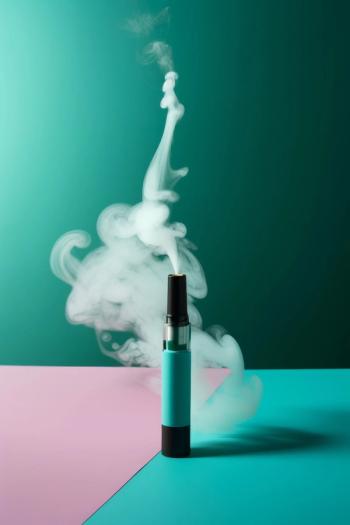
Cannabis Science and Technology
- April 2021
- Volume 4
- Issue 3
The Evolution of Ethanol Extraction Methods in Cannabis

A review of the evolution of the ethanol extraction method within the cannabis industry, where it stands today, and the other alcohols that are being introduced to the cannabis extraction space.
Ethanol has maintained its position as one of the most scalable extraction methods because of its simple methodology and solvent properties. Over time, the technology used in ethanol extraction has increased the selectivity of the method and resulted in shortened post-processing times and increased purity. In this article, we will walk through the evolution of the extraction method within the cannabis industry, where it stands today, and the other alcohols that are being introduced to the cannabis extraction space.
Ethanol has been used for centuries as an extraction method and an ingredient to produce perfumes, food colorings and flavorings, medicinal bases, and essential oils. The US Food and Drug Administration (FDA) has found production of consumer goods using food-grade ethanol to be safe for human use and consumption, which cannot be said of other alcohols. It is the second most popular solvent behind water. It is also the least toxic of all alcohols, making it one of the most widely used solvents in consumer goods. Because of all the aforementioned characteristics, it is no surprise that ethanol has also maintained its position in the cannabis industry as one of the most widely used solvents for extraction of cannabinoids.
Ethanol is a polar solvent, but can have both polar and nonpolar properties. It attracts polar and ionic molecules, through its hydroxyl group, and can attract nonpolar molecules because of the nonpolar nature of the ethyl group. Hydrogen bonding of ethanol and water with the hydroxyl group can be seen in Figure 1.
Tetrahydrocannabinolic acid (THCA) and cannabidiolic acid (CBDA) are both polar compounds due to their acidic hydroxyl group. Therefore, they are both easily extracted with ethanol at room temperature. Chlorophyll is an undesired polar compound that easily coextracts with the cannabinoids during most methods of ethanol extraction. This is why crude ethanol extracts, such as modern products listed as Rick Simpson oil (RSO), have a dark green color and concentrations in the 40–60% range. Advancements have been made in methodology to optimize for the extraction of cannabinoids and exclude chlorophyll and waxes.
Methods of the Early Years
Maceration
This method has been used for centuries and is considered a “traditional” medicinal preparation method for phytochemicals (2).
Method
- Plant material, like cannabis, is soaked in ethanol.
- The plant material is then filtered to separate the solid from the liquid solvent-solute solution.
- The solution is processed using rotary evaporation or falling film evaporation to remove the solvent. This results in a crude botanical extract.
- Products, such as alcohol-based tinctures, can be produced directly from the extraction using the solute-solvent solution.
Pros
- Ease of method
- Fast extraction time
- Low cost
- Can be used at a small and
large scale
Cons
- Highly variable
- Minimal control over extracted target compounds
- Can be a long extraction time depending on the input material, proof of ethanol, and temperature at which the extraction occurs.
- With respect to cannabis extraction, the inability to control the temperature of the extraction and therefore the polarity of the solvent, results in an extract containing chlorophyll, water, and other compounds. If the goal of the extraction is to purely extract cannabinoids, this method produces an extract that is not.
Soxhlet Extraction
This method has been used for decades and is considered a “traditional” medicinal preparation method for botanicals.
Method
- Plant material, like cannabis, is packed into a column that is positioned between the boiling flask containing ethanol and a
condensing column. - The ethanol is heated to produce a vapor, which will then interact with the plant material such that an extraction occurs. The resulting solution is a mixture of solvent and compounds that are soluble in ethanol at the vapor temperature of ethanol.
- The ethanol-extract solution then collects in the boiling flask.
Pros
- Ease of method
- Plant material is contained separately from ethanol-extract solution, eliminating the need to filter the plant material from the solution.
- Fast extraction time
- Low cost
Cons
- Low selectivity
- Not scalable
- As with the maceration method, the result is a cannabis extract that is far from pure.
Recent Advancements
Cold Ethanol Extraction
This method has developed over the past decade to improve the selectivity of ethanol and optimize extraction of cannabinoids.
Method (5)
- Plant material is loaded into a mesh bag or basket and placed in the extraction chamber.
- Ethanol is chilled to -40 °C then introduced to the extraction chamber soaking the plant material and the solute is extracted with the ethanol that flows through the plant material.
- The ethanol-extract solution is then pumped out of the extraction chamber to a collection vessel to be processed further.
- The solvent is evaporated using rotary evaporation or falling film evaporation.
- The extract can then be used to formulate final products or distilled further for higher purity of cannabinoids.
Pros
- Increased solvent selectivity, resulting in a more pure-cannabinoid extract
- Scalability
Cons
- Increased extraction time
- Reduced solvent solubility and yield
- High equipment cost
- High electricity usage to chill the solvent
Liquid-Solid Mix and Separation Centrifuge Extraction with Cold Ethanol
This is the most common method used in cannabis and hemp ethanol
extraction today.
Method
- Plant material is ground to a uniform size.
- Plant material is added to a mesh bag and placed inside a centrifuge basket.
- Ethanol is chilled to -40 °C then introduced to the centrifuge chamber where the ethanol soaks the cannabis.
- The centrifuge is powered on and churns like a washing machine to mix the solvent and plant material while the solute is extracted.
- After the extraction, the extracted solution is pumped out of the centrifuge basket into a collection vessel.
- The solution is then introduced to a solvent removal process, like falling film evaporation, which leaves the final extract complete and ready to formulate.
Pros
- Fast extraction time
- Increased solvent selectivity
- Separation of liquid and solid occurs simultaneously with the extraction, eliminating a filtration step
- Ease of use
Cons
- Reduced solvent solubility and yield
- High equipment cost
- High electricity usage to chill the solvent
- Equipment maintenance—ethanol can easily cause fast wear on bearings that are integral to high speed centrifuges
- Highly laborious to continuously remove and refill the centrifuge with plant material
- Note: As the process scales up, a noticeable decrease in yield has been acknowledged as a result of more ethanol being used and remaining within the plant material. This reduces the yield and increases processing time in the evaporation stage.
Other Alcohols
Other alcohols, like isopropyl or methanol, have been utilized in botanical extraction for many years. Isopropyl alcohol and methanol are significantly lower in cost than ethanol, but have their own pros and cons including being toxic to inhale or ingest at far lower concentrations than ethanol (6). Methanol has a lower boiling point, which also indicates a lower polarity. Being less polar than ethanol, methanol is less efficient at extracting THCA and CBDA. Isopropyl alcohol has a higher boiling point and higher polarity, this results in higher yields of cannabinoids in a shorter amount of time, but also extracts higher quantities of chlorophyll. The evaluation of solvents is heavily focused around the cost of a solvent, a company’s ability to remove all of the residual solvent to minimize consumer risk, and post-processing time and methods. These alternative alcohols are strong candidates for any business that further refines the extract using distillation. Wiped or thin-film distillation can produce a pure cannabinoid distillate, reducing the need for purity in the crude form.
The Future
As hemp and cannabis processors continue to scale up, technology must keep up with rapid improvements and development to address the bottlenecks in processing massive amounts of biomass. These bottlenecks are in the grinding process, loading and unloading inputs, and solvent evaporation. Leading manufacturers, such as Eden Labs, are introducing continuous-feed centrifuge technology to the cannabis industry. This methodology involves a continuous stream of ground plant material and ethanol flowing through a centrifuge which creates a solid-liquid slurry where the extraction occurs. The slurry is then continuously pumped into a separation centrifuge where the solid and liquid materials are separated. The liquid ethanol-extract solution is then continuously pumped into a solvent evaporation step. While falling film evaporators have become the chosen evaporation method, the continuous feed technology has forced an even better method to be utilized called membrane filtration. Using scalable membrane technology, the extract and solvent are easily separated and can accommodate continuous feed. Ethanol extraction is primed for continuous feed and complete automation, reducing costs and bottlenecks in scalability.
Through advancements in technology, such as the coldfinger or cold-ethanol extraction of cannabis and hemp, efficiency and selectivity of the solvent has dramatically increased and improved the extraction of desired compounds. After the solvent evaporation process, the cannabinoid concentrate is ready to be formulated for end products. With the right temperature, extraction time, and equipment, ethanol extracted cannabis and hemp can produce relatively high purity (60–70%), golden cannabinoid extract, with extraction efficiencies of +90%. Ethanol continues to be the solvent of choice for high-throughput cannabis processors aiming to extract hundreds to thousands of pounds of cannabis and hemp biomass daily. Ethanol extraction is a prime candidate for automation, which will translate to improved efficiency, lower costs, higher throughput, and much more. It will be interesting to watch as automation is integrated into ethanol extraction and refinement processes in the coming years.
References
- N.E. Schore and K.P.C. Vollhardt, Organic Chemistry: Structure and Function (Bleyer, Brennan, New York, New York, 2007).
- B.A. Weggler, B. Gruber, P. Teehan, R. Jaramillo, and F.L. Dorman, in Separation Science and Technology (Academic Press, Volume 12, 2020, Chapter 5 - Inlets and sampling) pp. 141–203,
https://doi.org/10.1016/B978-0-12-813745-1.00005-2 . - New Directions Aromatics, 2017, “Untapping the Power of Nature: Essential Oil Extraction Methods”
https://www.newdirectionsaromatics.com/blog/articles/how-essential-oils-are-made.html . - Eden Labs, 2021, “Coldfinger Ethanol Extraction”
https://www.edenlabs.com/coldfinger/ethanol-extraction-process/ . - R. Anton, et al., European Food and Feed Law Review 9(6), 391–398 (2014).
www.jstor.org/stable/24326136 . - Q.W. Zhang, L.G. Lin, and W.C. Ye, Chin. Med. 13(20), doi:10.1186/s13020-018-0177-x (2018).
About the Columnist
LO FRIESEN is the founder, CEO, and Chief Extractor of Heylo. With a background in chemistry and clinical research, Lo was inspired to explore cannabis as a medicine and to enter the emerging industry. She joined Eden Labs, a leading CO2 extraction equipment manufacturer to support and expand a Research and Development department. There she managed the development of their latest and greatest CO2 extraction system. In 2017, after working with Eden Labs and another cannabis processor, Lo launched Heylo with a mission to help people get more out of life with cannabis.
How to Cite this Article
L. Friesen, Cannabis Science and Technology 4(3), 13-16 (2021).
Articles in this issue
over 4 years ago
Why Dispensaries Need In-House Testingover 4 years ago
Gaining Deep Knowledge About Cannabis Cultivation: How and WhyNewsletter
Unlock the latest breakthroughs in cannabis science—subscribe now to get expert insights, research, and industry updates delivered to your inbox.




